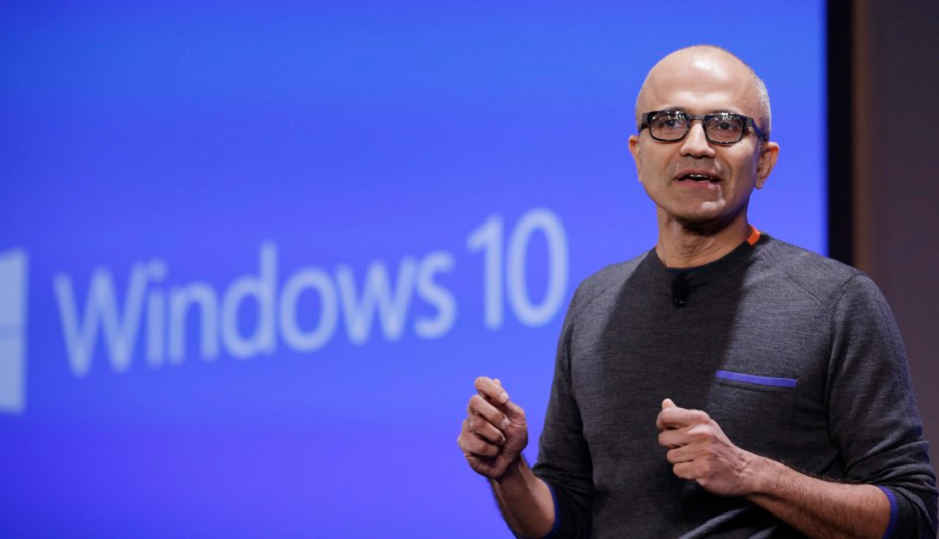Windows 10 is not bound to any one form factor: Satya Nadella
Microsoft CEO Satya Nadella gave ZDNet’s Mary Jo Foley an insight into how Windows Phones are not dead, how Windows 10 will streamline all devices related to the platform, and how Windows 10 is not bound to any one form factor.

With Windows 10 scheduled for launch in exactly two weeks, Microsoft’s chief Satya Nadella recently gave an interview to ZDNet’s Mary Jo Foley, speaking elaborately about Microsoft’s future in the smartphone industry, the prospect that HoloLens presents, recent partnership strategies, and the notion of mobility that Windows 10 provides. Here’s looking at three key aspects that Nadella touched upon.
 Survey
SurveyContinuum, mobility and the versatility of Windows 10
Continuum is Microsoft’s tool to make shifting between a mobile phone and a PC easy and streamlined. And, as Nadella said in the interview, it is his favourite aspect in Windows 10. Microsoft is looking ahead into a world where computers are majorly valued in terms of how portable and easy they are to carry around. And it is here, that Nadella is focusing with Microsoft.
We have already seen the Surface tablet from Microsoft, which aims to bridge the gap between a laptop and a tablet device in terms of hardware. Microsoft is now looking to develop Windows 10 into a platform that provides an all-encompassing platform for all devices. As Nadella said, "If you come to Windows, you are going to be on the phone, too. Even if you want to come to Windows because of HoloLens, you want to come to it because of Xbox, you want to come to the desktop, all those get you to the phone." It is here that developers who make an application will not be providing it to, lets say, just Windows Mobile. Nadella is focused on improving compatibility between platforms to make devices truly mobile.
It is here that Windows 10 will prevail. According to Nadella, the operating system running on a phone is Windows Mobile, which, when connected to a large screen and a keyboard bundle, is Windows 10. This, coupled with Nadella’s focus on services and cloud computing, aims to shift the horizon of computing from separate desktop/mobile operating systems to a single, cohesive operating system.
The future of Windows Mobile
Nadella has made an intricate, yet vast, differentiation between the two aspects of Microsoft – Windows Mobile and Windows mobile. The latter is what Nadella aims to achieve with Windows 10’s versatility. Windows Mobile, on the other hand, has been much debated in recent times, more so after Microsoft’s $7.6 billion shakeoff from Nokia. But Microsoft is not looking to exit the smartphone business. Nadella recognises the "six-inch form factor" to be a very important factor in his aim of mobility. If nobody makes Windows Mobile smartphones, Nadella says, "we will make them".
Windows Mobile, the smartphone OS, is a part of the Windows mobile ecosystem. Even with the primary aim being on applications, services, platforms and mobility, Lumia fans can expect the Windows smartphones to keep coming, maybe at a smaller pace of production.
[Interestingly, Nadella himself uses a Lumia 830, which gives us more reason to believe Lumias to be in the market, in near future]
On 'platforms' and app bundles
While cross-platform compatibility is something that Microsoft has been aiming at for a while now, Nadella’s definition of 'platforms' is not systems with different architectures made by separate companies. By platforms, Nadella refers to Windows, Azure and Office. Each of these represent a separate platform integrated to coexist. Microsoft’s primary focus here is to provide platforms for every software sector to base hardware and software services upon.
Nadella is also aiming to integrate standalone apps together into a bundle that will, yet again, provide cohesive services. For instance, the Office bundle has allowed Microsoft to market its business-oriented applications more than when it tried selling them separately. The latest out of Microsoft’s stable is GigJam, that further amplifies Nadella’s strategies. GigJam is an application that will allow step-breakdown of tasks, thereby integrating messaging, networking, document and sharing applications all into one, cloud-based light applications suite. It is here that Microsoft is aiming to strike the chord – one place to perform all your needs, that also adapts itself when you wish to switch device form factors.
Nadella is carving out a niche for an all-encompassing platform. With Windows 10, a lot of Microsoft’s plans and ventures are being applied. Applications now will be synchronised to perform in PCs, mobiles, Xbox, Band and HoloLens, remodeling Microsoft into providing one unified platform, for 'everything'.
Source: ZDNet
Digit NewsDesk
Digit News Desk writes news stories across a range of topics. Getting you news updates on the latest in the world of tech. View Full Profile